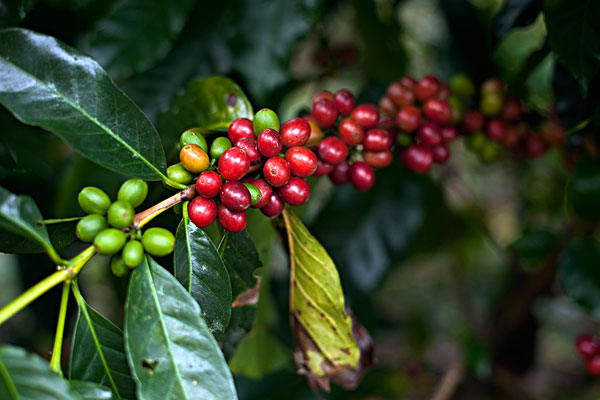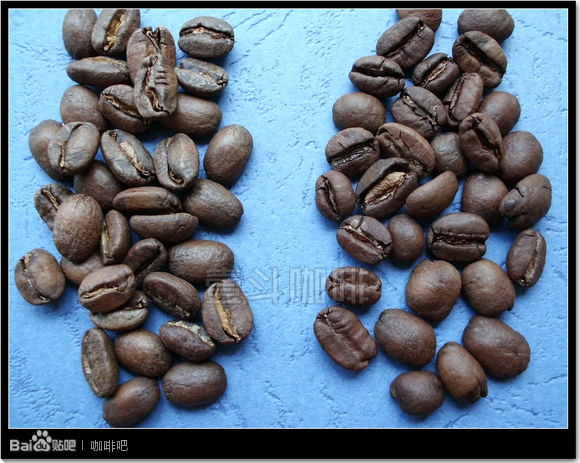China Coffee Network caffeine and decaf raw bean label interpretation: EP,SWP and decaf
Caffeine and decaffeinated coffee
Caffeine, caffeine, is a natural ingredient in coffee. In addition to coffee, many foods we come into contact with in our daily life also contain this ingredient, such as tea, chocolate, cola, cold medicine and so on.
In order to cater to a variety of tastes, coffee beans are sometimes decontaminated to get the familiar decaf, decaffeinated coffee.
Usually, depending on the type of coffee, raw coffee beans contain about 1-3% caffeine, and the presence of caffeine is basically unaffected during roasting. Robusta has twice as much caffeine as Arabica.
Decaffeinated coffee actually eliminates about 97% of the caffeine, not a complete cause.
There are two main ways to eliminate causes that are widely used in business:
EP,European Process, European treatment method; SWP,Swiss Water Process, Swiss Water treatment method.
EP: chemical beans?
In EP treatment, raw coffee beans are soaked in water, absorbed caffeine with dichloromethane (methylene chloride, an organic solvent) solution, then rinsed clean, dried, and entered the baking process. Except for the caffeine process, it only absorbs caffeine and has no effect on other ingredients in coffee beans. It is generally believed that there is no preparation residue in the coffee beans treated by EP after roasting. However, people will probably still mind emotionally the involvement of chemical composition.
SWP: steam beans?
The biggest advantage of SWP, the Swiss water treatment method, is that only hot water and steam are used except for the absence of any chemical agents in the process. The raw coffee beans are soaked in water, and all the soluble ingredients in the raw beans, including caffeine, are absorbed by the water, and the coffee beans that have been "sucked" are set aside, while the water that dissolves and turns into an "essence" goes through an activated carbon filter, which absorbs caffeine from the water. The decaffeinated water meets the raw coffee beans again, and the raw beans are bathed in water to reabsorb the lost essence. Then, the raw beans are dried and baked.
The biggest advantage of SWP is that there are no chemical solvents involved in the whole process, but the disadvantage is that while the water absorbs caffeine, it also dissolves other ingredients of coffee beans, including some natural coffee oils, some of which cannot be reabsorbed by raw beans. The raw beans treated with SWP will lose part of their flavor.
The Gospel of decaf lovers
The good news is that in 2004, scientists discovered a natural decaf tree in Ethiopia, belonging to Arabica, which lacks the enzymes needed to synthesize caffeine. Coffee drinkers may soon be able to enjoy delicious natural decaf.

Important Notice :
前街咖啡 FrontStreet Coffee has moved to new addredd:
FrontStreet Coffee Address: 315,Donghua East Road,GuangZhou
Tel:020 38364473
- Prev

China Coffee Network recommends coffee culture. why don't you like coffee?
In the classic Korean drama "the Man of Queen in-hsien", there is a short clip in which the hero and heroine use their spare time waiting for the plane to date in a coffee shop on Jeju Island. The heroine ordered green tea for the hero and cappuccino for herself, and then the hero and heroine said: hero: I don't understand why modern people like coffee. I tried it and didn't think it tasted good. Hostess: you're not used to it.
- Next

Coffee variety Pacamara Variety Origin Variety Flavor
Variety origin Pacamara is an artificial hybrid of Pacas and Maragogype, which was first bred by Salvadoran research institutions in the 1950s (mostly 1958). The new variety is considered to be the result of the pursuit of large grain Arabica species and inherits the good characters of the parent plant. Pacas is a Salvadoran variety of Bourbon and inherits bourbon.
Related
- How did the Salvadoran coffee industry develop in Central America?
- What exactly does the golden cup extraction of coffee mean?
- The Origin of Coffee flower
- [2023 Starbucks World Earth Day] there are more meaningful things besides free Starbucks coffee!
- What kind of coffee is there in Spain? 9 Flavors of Spanish Coffee
- Aromatic African coffee| Kenya's coffee culture and historical production area
- Liberica Coffee Bean knowledge: the characteristics of Liberian Coffee beans of the three original species of Coffee beans
- The origin and formula of Spanish latte introduces the taste characteristics of Bombon coffee in Valencia, Spain.
- How to adjust the solution of over-extracted coffee
- What is the tasting period of coffee beans? What is the period of coffee and beans? How should coffee wake up and raise beans?

